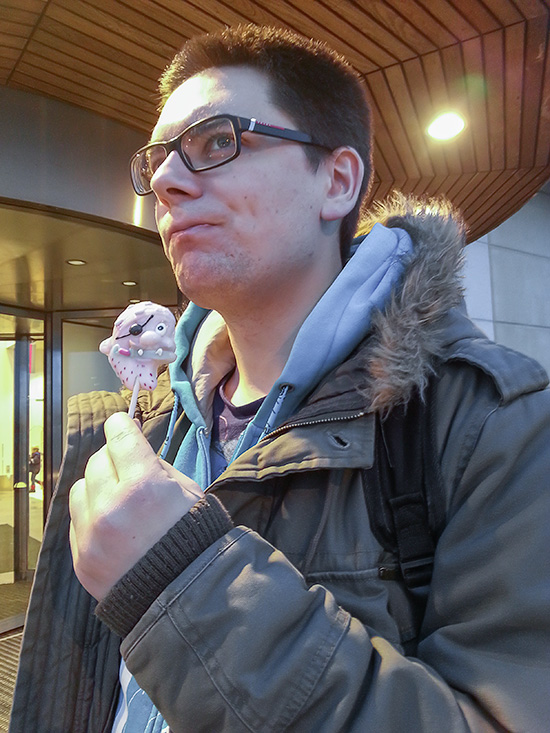Claude Lévi-Strauss* once said: “The scientist is not a person who gives the right answers, he’s one who asks the right questions.” According to this definition I have been a scientist since the age of five, when I could torture my mom for hours with never-ending questions about everything. To these days questioning hasn’t stopped; I just bother other people now or I try finding the answer myself.
I should probably mention that the only thing that connects me to biology is fact that I am part of it, as all about 7 billion humans. As a physicist I feel like sort of a black sheep in a flock of biologists. “What are you doing here?” One might ask. The answer is simple: It turns out that having a different point of view and approach can be very useful. For me, the crystalline lens of a fish eye is JUST** a lens. I don’t know any biological measurement methods, but I am experienced in many optical techniques, strictly used in technical applications and mostly non-destructive. This particular set of skills might come very handy if applied to biologically relevant questions.
I received my Bachelor and Master degrees from the Mechatronics Faculty, Warsaw University of Technology. I came to study Photonics Engineering out of pure curiosity and fascination with light when I spotted colorful shapes around a crack on my cell phone’s display in a window’s reflection. My academic work concerned measurements of resonance vibrations of MEMS (Micro Electro-Mechanical Systems). Since I have got a wide education in optics and photonics, I thought that facing something completely new will be challenging and interesting.
In the Lund Vision Group I’m trying to find out how fish can create sharp color images with one lens when specialized camera lens manufacturers need eight or more. Other questions are: Why is there spectral overlap in cone photoreceptor sensitivities, which by analogy to cameras would make the signals very noisy? How can a fish crystalline lens keep growing throughout life and nevertheless keep exactly the same optical properties, even with 95% of the cells in the lens being devoid of all organelles? What mechanism maintains the very precisely adjusted refractive index profile in a fish lens? What is an optimal multifocal lens and how are animal lenses optimized during evolution and development? These and other questions will be answered. Stay tuned!
* Yeah, I don’t know who he is either, but what he said is pretty smart…
**OK, it’s still damn awesome…

